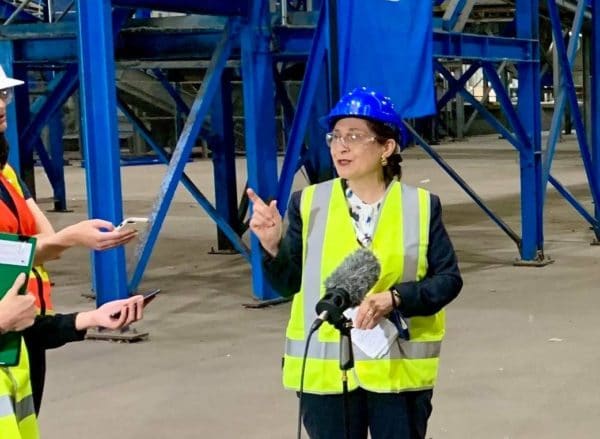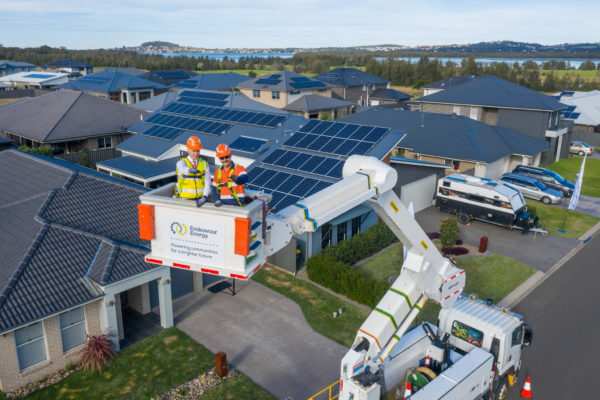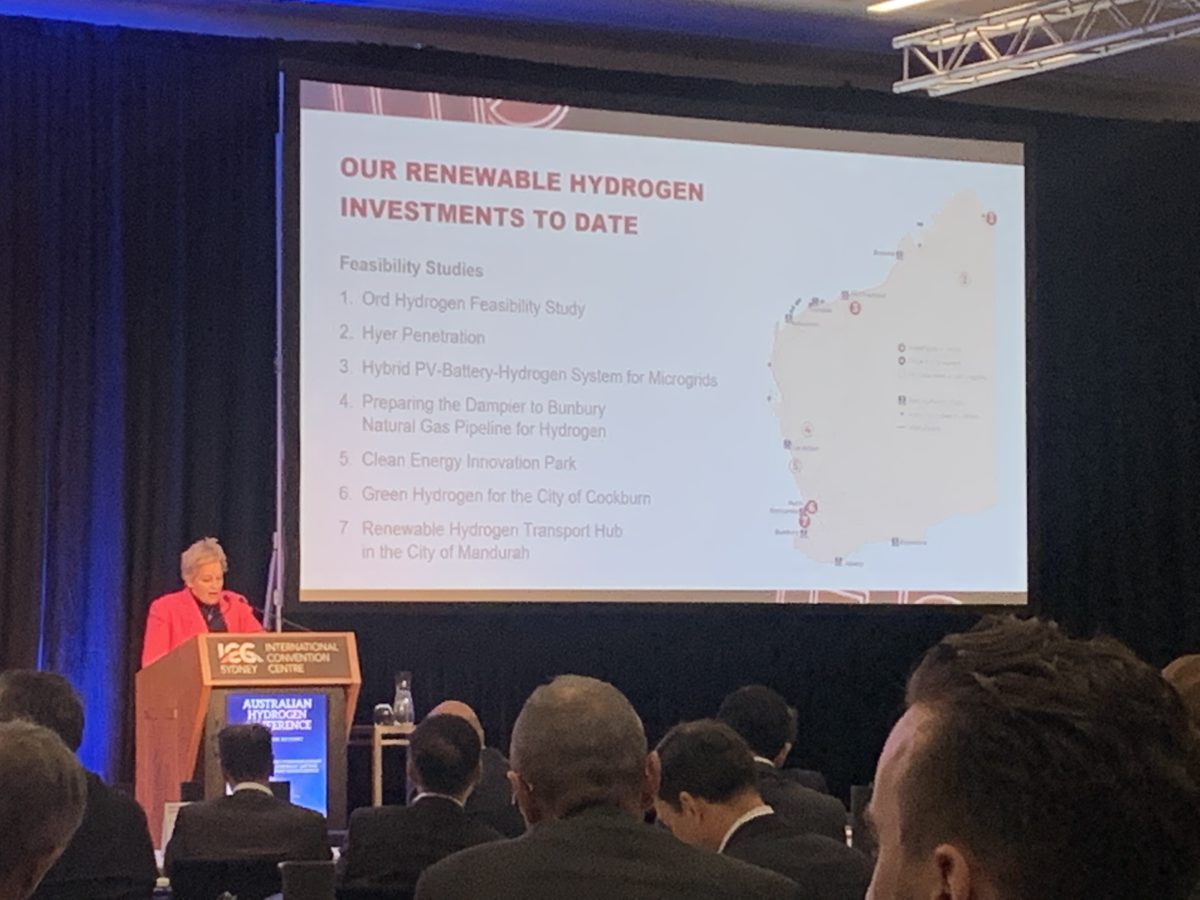A procession of state ministers have addressed the Australian Hydrogen Conference, held in Sydney on Wednesday and Thursday, each eager to convince industry and investors present that their state holds the keys to Australia’s green hydrogen future.
West Australian Alannah MacTiernan addressed the crowd Wednesday morning, saying she wants to see her state producing 10 GW of green hydrogen in the next 10 years. While she acknowledged big “10 GW plus” projects are unlikely to get off the ground before 2027, she was adamant that by then momentum would be on West Australia’s side.
“Certainly our aspiration is that we think we could do 200 GW by 2040,” she said. Putting that massive number into context, she noted the total size of the stationary energy market in Australia is only about 70 GW.
“But if we’re going to become a big exporter, we’ve got to be producing some big numbers,” MacTiernan said.
MacTiernan also noted this push towards hydrogen, primarily green hydrogen, was “to a very large extent” driven by customers who are “demanding accountability.”
Western Australia is one of the world’s largest natural gas exporters, commanding around 13% of total world supply. In the last year, major offtakers like Japan and South Korea have committed to net-zero emissions and with that solidified a “green hydrogen future,” MacTiernan said.
Repeating the mantra, ‘the customer is always right,’ MacTiernan noted Australia not only has a moral imperative to decarbonise but it also has a business imperative.
The minister said that while natural gas exports may not be the state’s longterm future, they have set Western Australia up with the foundations it needs to pursue its greener hydrogen future. MacTiernan said the plan is to “capitalise” on the state’s store of skills and expertise built from natural gas production and direct this towards hydrogen.
MacTiernan was not the only minister spruiking such a plan though. Speaking via video-link on Thursday, Victorian Minister for Energy, Environment and Climate Change, Lily D’Ambrosio, also pointed to her state’s gas use.

Image: Facebook
Victoria has the highest household gas use of anywhere in Australia, she said. Decarbonising this sector is seen as one of Victoria’s biggest challenges. “I prefer to see it as having the biggest opportunity for us,” D’Ambrosio said.
Because of its high gas use, Victoria also has an extensive gas pipeline network – one which D’Ambrosio, like so many at the conference, wants to see filled with hydrogen.
“It’s an exciting time for those with the foresight to capitalise,” D’Ambrosio said, also leaning strongly into a narrative around reusing workforce expertise and knowledge bases stemming from natural gas.
The Victorian minister concluded by imploring international investors to understand they have a “friend and collaborator in the Victorian government.”
Queensland’s Minister for Energy, Renewables and Hydrogen, Mick de Brenni, also presented via video link. Like Western Australia, his state is home to a sizeable hydrogen project pipeline. He acknowledged that to get the infant industry off the ground, significant government investment would be required.
New South Wales’ Minister for Energy and Environment, Matt Kean, South Australian Minister for Energy and Mining, Dan van Holst Pellekaan, and Tasmania’s Minister for Energy, Guy Barnett, all addressed the conference too, similarly painting their states as future hydrogen leaders.

Endeavour Energy
While there could be little doubt about almost all of Australia’s state governments’ drive for hydrogen, talk is, as they say, cheap. Former prime minister Malcom Turnbull did not dance around this point when he addressed the conference Wednesday morning. “We need to [actually] get some big projects underway.”
He called Australian governments’ current hydrogen investments “very modest by international standards.”
Where Australian governments are pledging millions, Germany, for instance, has committed €9 billion (more than AU$14 billion). “We have to get on and do it,” Turnbull said of seizing Australia’s hydrogen potential.
This content is protected by copyright and may not be reused. If you want to cooperate with us and would like to reuse some of our content, please contact: editors@pv-magazine.com.









1 comment
By submitting this form you agree to pv magazine using your data for the purposes of publishing your comment.
Your personal data will only be disclosed or otherwise transmitted to third parties for the purposes of spam filtering or if this is necessary for technical maintenance of the website. Any other transfer to third parties will not take place unless this is justified on the basis of applicable data protection regulations or if pv magazine is legally obliged to do so.
You may revoke this consent at any time with effect for the future, in which case your personal data will be deleted immediately. Otherwise, your data will be deleted if pv magazine has processed your request or the purpose of data storage is fulfilled.
Further information on data privacy can be found in our Data Protection Policy.